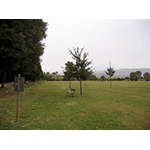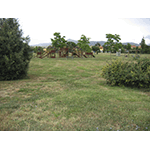Cascine di Tavola
The farm known as "Cascina di Tavola" was born after Lorenzo the Magnificent’s purchase, in 1470, of the area on which the Villa Ambra at Poggio a Caiano was successively built. The villa of Cascina di Tavola, surrounded by an enclosed hunting reserve known as the Barco Reale or Barco Mediceo, and the homesteads and farms lying in the Tavola area, along the banks of the Ombrone River in Prato, formed the oldest nucleus from which the complex intervention of draining and containing the waters developed.
In 1477, Lorenzo the Magnificent gave the farm that had been built for the needs of the villa, the form of a Renaissance model farm where quality products (such as honey and silk) were produced, and prime livestock was raised, in addition to exotic hunting animals (such as peacocks, Spanish rabbits and white deer). The farm’s main structure, still visible despite the restructuring that continued up to the time of the Kingdom of Italy, still preserves the look of a late medieval fortalice with fosses and corner towers concentrated around a central courtyard. Derived from Vetruvius’ treatise, De Architectura, the structure was built by Giuliano da Sangallo or, according to others, by Giuliano da Maiano.
Under the grand duchy of Francesco I de’ Medici, the farm increased its functions in the study of new cultivation systems to the point of becoming one of the first rice plantations in Italy at that time. This cultivation, however, was outlawed by Peter Leopold of Lorraine to contrast the development of malaria in the surrounding area.
The farm has been private property since the 1920s, but the park that surrounds it is still open to the public and can be regularly visited.
****************************
Texts by Gabriele Pratesi
English translation by Victor Beard
Last update 12/gen/2008





